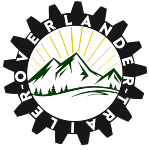Building a kitchen in a DIY camper requires careful planning to ensure functionality, safety, and space optimization. Here are some key considerations:
- Layout and Design:
- Space Efficiency: Campers have limited space, so plan a layout that maximizes every inch. Utilize vertical space for storage and consider foldable or multipurpose furniture.
- Workflow: Arrange the kitchen components (sink, stove, counter space) to create an efficient cooking workflow. Keep frequently used items within easy reach.
2. Appliances:
- Stove: Choose a compact, portable stove that suits your cooking needs. Propane or butane stoves are common choices.
- Sink: Opt for a small, lightweight sink with a hand pump or electric pump faucet system. Consider gray water disposal regulations.
- Refrigeration: Decide between a portable cooler, 12-volt fridge, or absorption fridge. Consider power consumption and available space.
3. Materials:
- Weight: Choose lightweight materials to avoid overburdening the camper. Plywood, lightweight composites, and aluminum are popular choices.
- Durability: Camper kitchens should withstand travel-related vibrations. Use durable materials that can handle temperature fluctuations and moisture.
- Easy to Clean: Select materials that are easy to clean and maintain. Consider using waterproof and stain-resistant surfaces.
- Storage:
- Cabinets and Drawers: Install cabinets and drawers for storage. Use organizers and dividers to keep items secure while driving.
- Overhead Storage: Utilize overhead space for items you don’t need daily access to.
- Pantry: Dedicate a space for dry goods, spices, and non-perishable food items.
4. Water and Plumbing
- Water Source: Determine your water source, whether it’s a built-in water tank or portable containers. Plan for easy refilling and consider a filtration system.
- Plumbing: If using a sink, plan the plumbing layout carefully. Include proper drainage and secure all connections to prevent leaks.
5. Electrical System:
- Power Source: Decide on your power source—solar panels, camper hookup, or a combination. Calculate power needs for appliances, lighting, and charging devices.
- Wiring: Properly wire electrical components to ensure safety. Consider using a fuse box or breaker panel to prevent overloads.
6. Ventilation:
- Cooking Odors: Proper ventilation is important to dissipate cooking odors, smoke, and excess heat. Install a vent or fan system near the cooking area.
7. Safety:
- Fire Safety: Install a fire extinguisher within easy reach. Choose fire-resistant materials around the stove and cooking area.
- Gas Safety: If using gas appliances, ensure proper ventilation and install a gas leak detector.
- Electrical Safety: Follow safety guidelines for electrical installations to prevent electrical hazards.
8. Aesthetics and Comfort:
- Aesthetics: Consider the overall design and style that complements your camper’s interior.
- Comfort: Design comfortable seating and eating areas. Add lighting for ambiance and functionality.
9. Legal and Regulatory Considerations:
- Weight Regulations: Ensure your camper’s weight, including the kitchen setup, adheres to legal limits.
- Gray Water Disposal: Research local regulations for disposing of gray water from sinks.
Before starting your DIY camper kitchen project, research thoroughly, create detailed plans, and consider seeking advice from experienced campers or builders. Keep safety, functionality, and your personal needs in mind throughout the design and construction process.

order misoprostol for sale – diltiazem us diltiazem pills